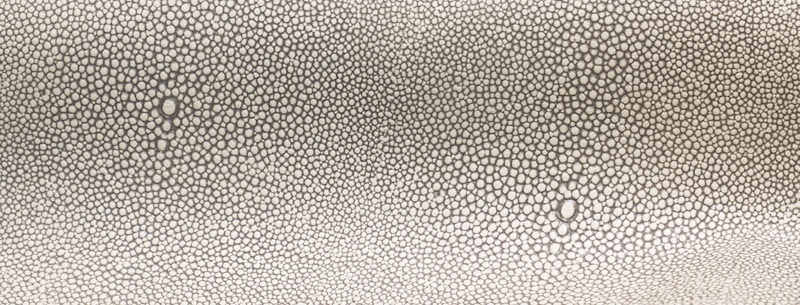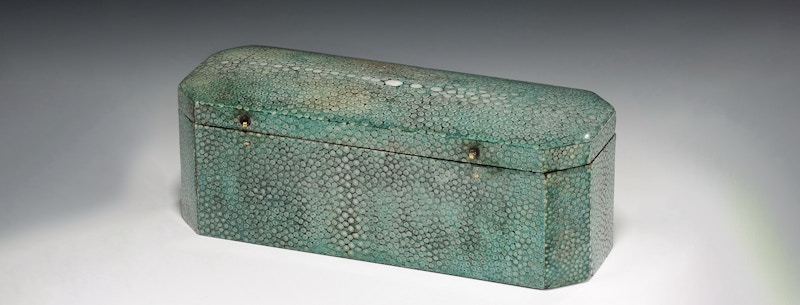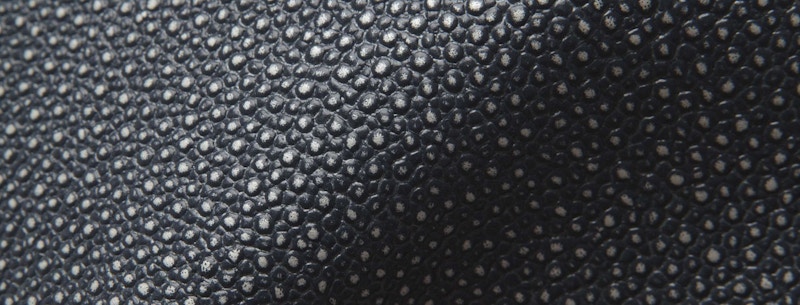The history of Shagreen
Since its very beginnings, shagreen has symbolised splendour. History suggests that amongst its earliest uses were for Japanese Samurai swords in the 13th century, cushioning the handles with its pebbly softness, providing necessary grip and denoting opulence.
Being a hide, shagreen is innately robust, which led to it also being used in the practice of grating wasabi root into a paste. This traditional method is still seen in modern Japanese society.
It wasn’t until 16th-century that evidence of sting-ray hide as a decorative material was uncovered across Europe. Shagreen furniture from Japan, such as chests and trunks, was imported and upon arrival, was found cloaked in the rarely-seen, textured substance and was even used for microscopes as it’s grip allowed for precision turns on dials and knobs.
Its popularity waned until English and Dutch craftsmen had a renewed interest and began using shagreen as a covering on trinket boxes, knife handles and shaving kits. This neatly coincided with the introduction of dye to fabric and furniture, which explains why most shagreen in its earliest days was in shades of jade, sage and emerald green.
Towards the middle of the 18th-century, shagreen saw yet another surge in popularity thanks to Madame de Pompadour – a notable member on France’s court scene and chief mistress to King Louis XIV. She fell for shagreen’s charms, investing in numerous pieces from the craftsman, Jean-Claude Galuchat and even Napoleon himself even decorated his entire bedroom in it!!!


